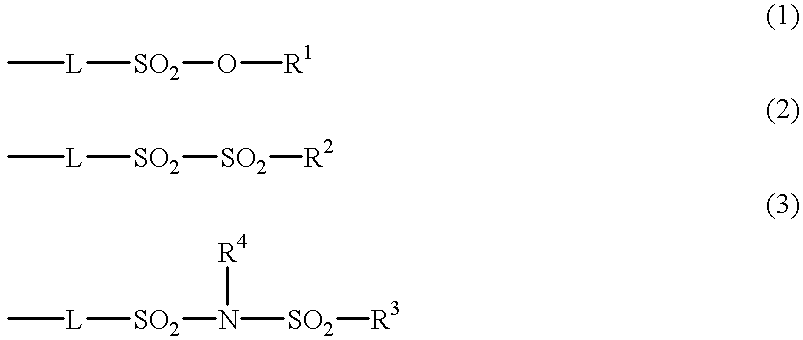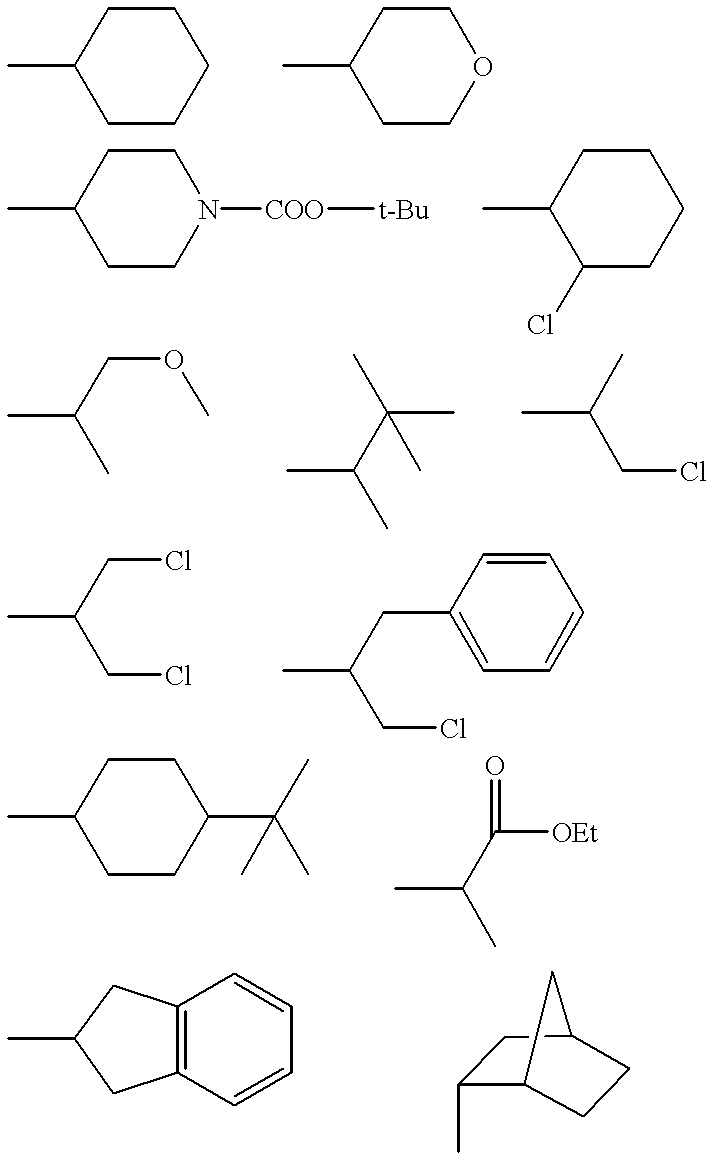Radiant ray-sensitive lithographic printing plate precursor
a lithographic plate and precursor technology, applied in thermography, instruments, photosensitive materials, etc., can solve the problems of complex exposure and development, insufficient methods, complex apparatus,
- Summary
- Abstract
- Description
- Claims
- Application Information
AI Technical Summary
Benefits of technology
Problems solved by technology
Method used
Image
Examples
examples
[0039] A series of (i) a material capable of light / heat conversion and low melting point dispersed particles (e.g., wax particles) containing reaction component B which reacts with reaction component A, and (ii) a dispersion medium containing reaction component A. When the light energy given by radiant ray irradiation dissolves low melting point dispersed particles by light / heat conversion, reaction component A starts to contact with reaction component B in a molten liquid phase, a self-exothermic reaction continues without irradiation of radiant rays thereafter, and the separation of an image part from a non-image part progresses. The light / heat conversion material and reaction component B may be the same (e.g., a metal powder) or different series comprising other materials.
[0040] The following materials or material series can be exemplified as the analogous examples.
[0041] a. A series of (i) solid acid having a low melting point (e.g., a higher fatty acid) containing a light / heat ...
examples i-1 to i-8
[0186] Lithographic printing plate precursors comprising an iron powder as a material (a) having a light / heat conversion function and a self-exothermic reaction function, and a polymer compound generating a sulfonic acid by heating as a material (b) having a separating function of an image part from a non-image part were prepared.
[0187] Iron Fine Powder
[0188] The above-described alloy of iron fine powder having Fe / Co / Al / Y ratio of 100 / 20 / 5 / 5, a particle size having a long axis length of 0.1 .mu.m, a short axis length of 0.02 .mu.m, and a specific surface area of 60 m.sup.2 / g was kneaded in a continuous kneader with the polymer (polymer compound) shown below and dispersed using a sand mill.
[0189] Synthesis of Sulfonic Acid-Generating Type Polymer Compound
[0190] (1) Synthesis of Monomer (1)
[0191] Two hundred (200) ml of acetonitrile, 11 g of hexyl alcohol and 8.8 g of pyridine were put in a three neck flask having a capacity of 500 ml and stirred. Twenty point two (20.2) grams of viny...
example ii-1
[0200] The following compositions were put in a paint shaker (manufactured by Toyo Seiki Co., Ltd.) together with glass beads and dispersed for 60 minutes, and then glass beads were filtered, thereby a dispersion was obtained.
4 Iron fine particle powder 50 g Titanium oxide sol (30% solution) STS-01 167 g (manufactured by Ishihara Sangyo Kaisha Ltd.) Tetramethoxysilane (manufactured by 50 g Shin-Etsu Chemical Co., Ltd.) Concentrated hydrochloric acid 0.5 g (manufactured by Wako Pure Chemical Industries Ltd.) Ethanol 783 g Water 117 g
[0201] The above-prepared coating solution was coated on a PET support having a thickness of 188 .mu.m using a wire bar coater in coating weight of 1 g / m.sup.2, and then dried at 100.degree. C. for 10 minutes, thereby a lithographic printing plate precursor was obtained.
[0202] Iron Fine Particle Powder
[0203] Fe / Co / Al / Y ratio: 100 / 20 / 5 / 5
[0204] Particle size:
[0205] Long axis length: 0.1 .mu.m
[0206] Short axis length: 0.02 .mu.m
[0207] Specific surface area: ...
PUM
| Property | Measurement | Unit |
|---|---|---|
| Hydrophobicity | aaaaa | aaaaa |
Abstract
Description
Claims
Application Information
 Login to View More
Login to View More - R&D
- Intellectual Property
- Life Sciences
- Materials
- Tech Scout
- Unparalleled Data Quality
- Higher Quality Content
- 60% Fewer Hallucinations
Browse by: Latest US Patents, China's latest patents, Technical Efficacy Thesaurus, Application Domain, Technology Topic, Popular Technical Reports.
© 2025 PatSnap. All rights reserved.Legal|Privacy policy|Modern Slavery Act Transparency Statement|Sitemap|About US| Contact US: help@patsnap.com



